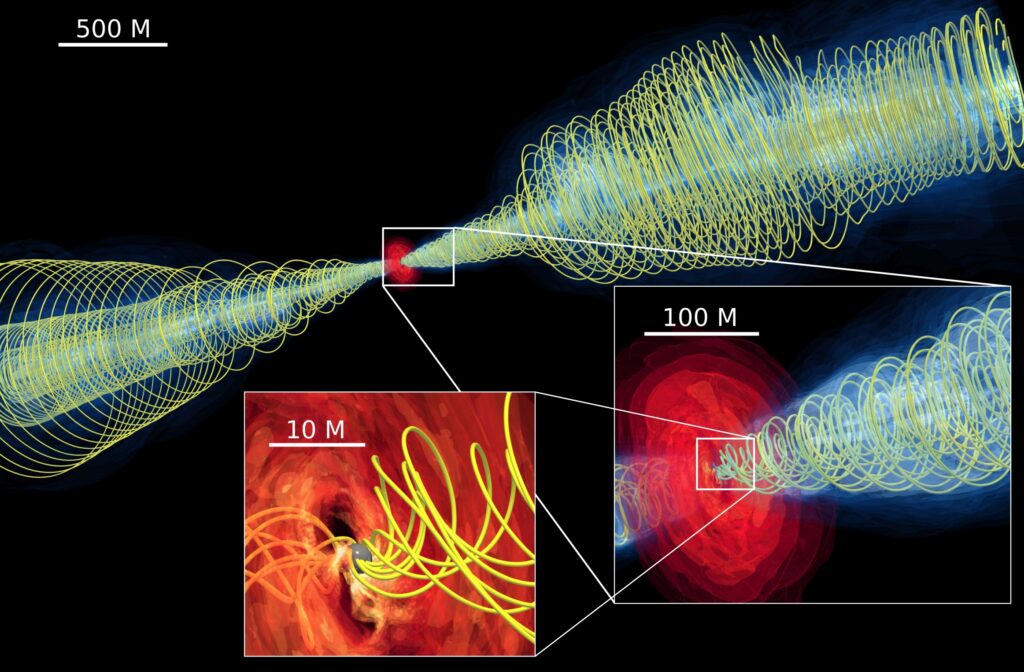M87 has been the target of numerous astronomical observations across the electromagnetic spectrum, and very long baseline interferometry has resolved an edge-brightened jet. However, the origin and formation of its jets remain unclear. In our current understanding, black holes (BH) are the driving engine of jet formation, and indeed the recent Event Horizon Telescope observations revealed a ring-like structure in agreement with theoretical models of accretion onto a rotating Kerr BH. In addition to the spin of the BH being a potential source of energy for the launching mechanism, magnetic fields are believed to play a key role in the formation of relativistic jets. A priori, the spin, a⋆, of the BH in M87⋆ is unknown; however, when accounting for the estimates of the X-ray luminosity and jet power, values of |𝑎⋆|≳0.5 |a⋆|≳ 0.5 appear favored. Besides the properties of the accretion flow and the BH spin, the radiation microphysics including the particle distribution (thermal and non-thermal) as well as the particle acceleration mechanism play a crucial role. We show that general relativistic magnetohydrodynamic simulations and general relativistic radiative transfer calculations can reproduce the broadband spectrum from the radio to the near-infrared regime and simultaneously match the observed collimation profile of M87, thus allowing us to set rough constraints on the dimensionless spin of M87* to be 0.5 ≲ a⋆ ≲ 1.0, with higher spins being possibly favored.

